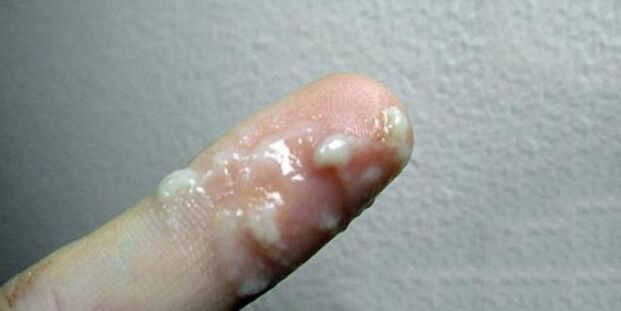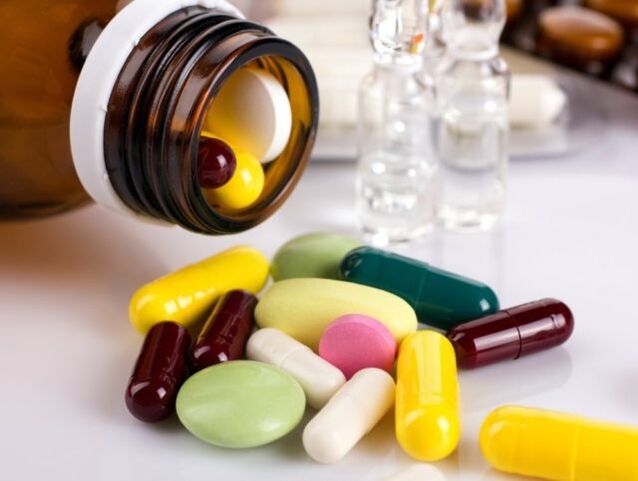As long as the human body, especially the man’s body, has no problems and no signs of pain in any part of the body, it seems that this representative of the strong will always be young and healthy, with minor illnesses and minor pains. The symptoms will go away on their own. However, according to statistics, the initial signs of male prostatitis seem insignificant, so they are ignored by the men themselves, which eventually leads to quite serious consequences. What needs to be done during the initial manifestations and signs of the development of prostatitis, how to prevent the deterioration of the nature of the disease and prevent adverse consequences-we will consider later in this article.
General information
According to statistics, prostatitis is the most common pure male urinary system disease, which is an inflammation of the reproductive system components such as the prostate under the bladder. Simply put, the prostate is located near the urinary tube, covering it. Inflammation of the prostate can cause it to swell, so it compresses the urethra, shrinks its lumen, and cannot completely empty the bladder during urination.
Decades ago, prostatitis was considered a disease of mature age because the disease was observed in strong sex after 45 years of age, and today signs of prostate inflammation can even appear in young (under 30) menmiddle.
The prostate in men has the following functions:
- Create secrets that make sperm more mobile and help increase the duration of sperm activity;
- Produce prostaglandins and other active substances and hormones;
- Provide sufficient sperm release rate;
- Prevent sperm from entering the urine.
The main problem that arises due to the development of prostatitis is that as the volume of the gland itself increases, the amount of urine remaining in the bladder after urination will increase, thereby poisoning the human body. Therefore, even mild symptoms of inflammation should not be ignored, so as not to cause more serious consequences of the disease.
reason
The results of long-term clinical studies make it possible to determine the main cause of the disease and the population most frequently suffering from prostatitis.
Therefore, the risk group includes men:
- Sitting for a long time at work, and a sedentary lifestyle;
- overweight;
- Sexual intercourse with promiscuity may result in damage from sexually transmitted infections;
- Frequent constipation, causing the spread of microorganisms and bacterial inflammation of the prostate;
- Due to injury or occupational reasons, such as drivers, the groin muscles are under excessive pressure;
- Susceptible to frequent hypothermia, hormonal disorders, and irregular sex life.
Signs of male prostatitis
Any serious disease will warn of the initial stage of its development through certain signals. If you do not consider them and do not seek expert advice in time, you may lose valuable time available to treat diseases.
Usually, the disease has no clear signs and develops into a chronic form that is difficult to treat without proper attention.
Through certain signals, it warns of the early development of any serious disease
But if a person pays attention to the changes that happen to him, he will definitely notice the initial symptoms of inflammation in the following manifestations of male prostatitis:
- I often want to urinate at night.
- The process of emptying the bladder itself is difficult, with characteristic weak pressure, intermittent or shunting, painful and longer than normal.
- A man feels a burning sensation when urinating, and the feeling of full bladder is still there afterwards.
- Pain during bowel movements.
- Decreased erection quality, fatigue, and involuntary erection at night.
- Feeling chills due to increased body temperature.
- Highlight a specific color.
Symptoms of prostatitis
Prostatitis caused by microorganisms (bacteria) can usually occur in two forms, acute and chronic, and each form is characterized by the appearance of specific symptoms:
- If prostatitis is observed in an acute form, a significant increase in body temperature is a common phenomenon. The pain will not only extend to the prostate area, but also radiate to the groin and even the waist area. Men have difficulty paying attention, frequent urination, and decreased libido;
- The chronic course of prostatitis is characterized by characteristic pain in the pelvis and perineum area, the presence of blood clots in semen and painful ejaculation, frequent urination at night, accompanied by burning pain and pain.
What are the characteristics of acute and chronic inflammation?
Acute prostatitis is far less common than chronic prostatitis. A characteristic manifestation of the acute form of the disease is the dislocation of the perineum and the characteristic severe pain that is exacerbated during urination and defecation. In addition, there may be residual secretions in the urethra and reduced erections. The temperature may rise to 38-39 degrees. In severe cases, acute urinary retention can lead to severe body poisoning.
The symptoms of chronic prostatitis are similar to other urinary system diseases, sometimes even asymptomatic. But it can be identified by slight and rapid pain in the perineum and groin and pubic area. The duration and quality of sexual intercourse will change significantly. When urinating in the morning, white flaky deposits may appear in the urine. A characteristic discharge may appear after emptying the bladder.
result
If you do not find diseases such as prostatitis and do not start treatment in time, the consequences may be very bad-a violation of the patient’s usual lifestyle, dependent on the toilet, continuous unpleasant and painful feelings, and stagnation due to poisoning caused by poisoningThe product of the body’s own life activities in the urine is poisoned, until serious disorders in the genital area, until impotence and infertility.

In addition, male prostatitis will reduce the quality of sperm, thereby reducing the possibility of conception. The pathological process that occurs in the prostate can lead to its abscess, renal failure, and inflammation of other organs in the genitourinary system.
Pain syndrome
Regardless of the form of prostatitis, this process is bound to be accompanied by pain syndrome, which often radiates to the scrotum, sacrum, abdomen, back and pelvis. The prostate itself does not produce such severe pain, but the nerve endings of other pelvic organs react violently to the inflammatory process located in it.
Specific emissions
Urethral secretions from prostatitis can be divided into the following types:
- Milky white, thick discharge-indicates the development of an inflammatory process in the prostate.
- Uncontrolled excretion of sperm from the urethra-indicates that prostatitis has transformed into a chronic form or the development of other diseases of the genitourinary system.
- Purulent secretions appear slow prostatitis, but combined with elevated temperature is a symptom that the disease turns into an acute form.
- Purulent secretions with a mixture of mucus are observed in the presence of bacterial prostatitis caused by microorganisms, and the infection mainly occurs through sexual contact.

Treatment of prostatitis
The complete cure of prostatitis is a long process and requires a comprehensive approach. First, with the help of laboratory tests, a diagnosis is made to determine the nature of the disease, and ultrasound, MRI, and tomography are prescribed. With their help, they clearly determine the existence of this specific disease, not anotherDiseases with similar symptoms.
Once the diagnosis of prostatitis is confirmed, the urologist will prescribe the necessary treatments, including:
- Drugs that improve blood circulation.
- painkiller.
- Anti-inflammatory drugs.
- If there are signs of poisoning, prescribe a detoxification solution and electrolytes.
- Other activities may include diet food, exercise therapy, and tranquilizers.
Surgical treatment is only suitable for prostate abscess or complete obstruction of bladder fluid.

How to treat prostatitis at home
Traditional methods of treating prostatitis include the use of natural remedies, such as:
- pumpkin seeds.
- Broth and enema made from chestnut skins.
- Tincture of ripe chestnut fruit.
- Freshly squeezed juices of carrots, beets, cucumbers and asparagus.
- Elderberry juice (black).
- Prostate massage.
However, please keep in mind that these funds are auxiliary and the treatment process will be quite lengthy and must be supervised by a qualified urologist.
Prevent prostatitis
Anyone can independently implement preventive measures:
- Pay attention to physical activity, reasonably alternate work, rest and physical activity;
- Walk, the more the better;
- Follow the rules of healthy eating and lifestyle;
- If you have mild symptoms of disease progression, please see a doctor;
- Use birth control pills;
- Men in danger should not bear weights and avoid excessive physical exertion;
- Adhere to an orderly sex life.
Comment
Forums devoted to various methods of treating prostate diseases are full of information, and the topics are the same:
- This disease affects approximately 60% of adult men (over 40 years of age);
- Many of them continue to postpone going to see a specialist, which leads to diseases and thus makes prostatitis a chronic disease;
- Pain signals and the presence of characteristic secretions are usually considered to be a manifestation of sexually transmitted diseases, and sometimes they take drugs alone according to the recommendations of friends, although they definitely know that it is best to consult an expert;
- Almost everyone has erectile dysfunction, decreased libido, and sexual dysfunction.















